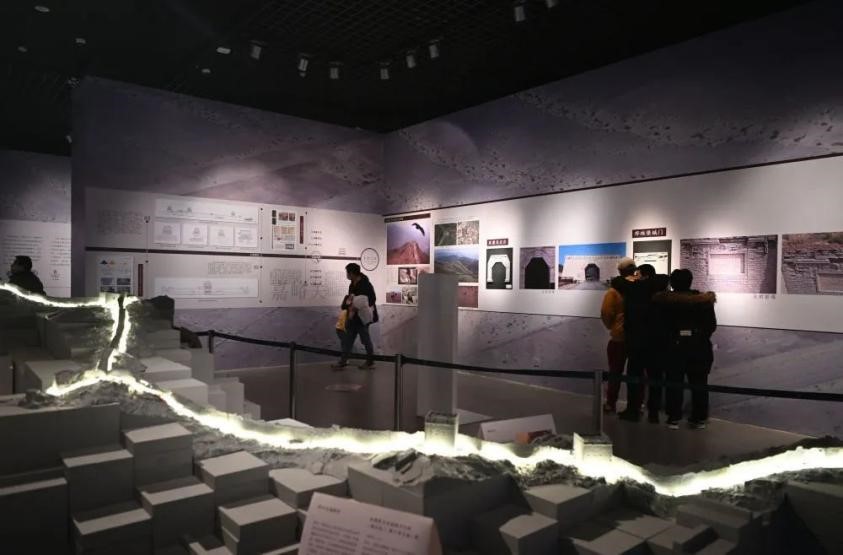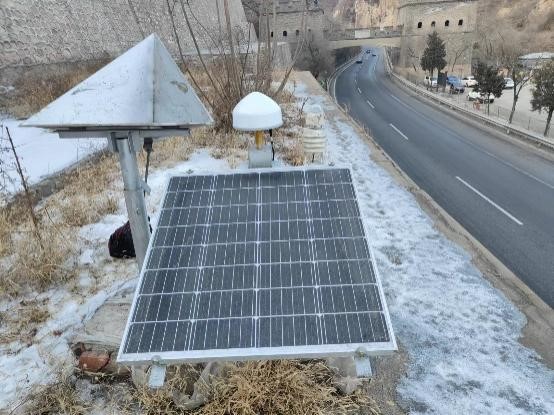Digital technologies contribute to Great Wall conservation, studies
Spanning 15 provincial-level regions, the Great Wall is China's most colossal cultural heritage structure. In recent years, regions across the country have vigorously leveraged digital technologies to advance the protection and studies of the Great Wall, making it accessible for virtual tours. With great care, this unique and precious treasure is being meticulously safeguarded.
At the Research Center for Urban Big Data Applications, Beijing University of Civil Engineering and Architecture, there are two computers showing the meteorological and vibration data at eight points along the Great Wall in real time.

Photo shows the Juyongguan Great Wall in Changping district, Beijing. (People's Daily Online/Yang Dong)
"Monitoring the deformation and damage of the Great Wall enables timely detection and assessment of the extent of wall damage, providing strong support for protection efforts," said Liu Fei, associate professor at the research center. The monitoring data can also be used to develop preventive measures, Liu added.
Over the course of thousands of years, the Great Wall of China has been subjected to various factors such as natural erosion, human activities, and historical changes, resulting in significant damage to many sections.
Over the course of thousands of years, natural erosion, human activities and historical changes have resulted in significant damages to many sections of the Great Wall. Some parts are on the verge of collapse, while some have lost a significant portion of their ground structure or foundation.
To treat these damages, it is important to identify the causes. Over the past four years, Liu and his team have launched an environmental vibration disaster monitoring project for the Great Wall in Huairou district and Changping district of Beijing. They have also carried out a research-based restoration project along the Dazhuangke section of the Great Wall in Yanqing district, collecting digital information of the section.
Additionally, the team utilized drone-based oblique photography technology to capture high-resolution images along a 352-kilometer stretch of the Great Wall in Beijing. These images were used to create orthophotomaps and real scene three-dimensional models, forming a database of the damages in an approximately 100-kilometer section of the Great Wall.

An exhibition on Great Wall studies and their digital achievements is hosted by Tianjin University at the Tianjin Museum, north China's Tianjin municipality. (Photo from the public account of Tianjin Museum on WeChat)
By employing deep learning algorithms, the team has developed an intelligent model for identifying damages, which features an accuracy of over 80 percent.
"More and more technologies are applied to help the Great Wall 'live longer'," said Liu. According to him, his team is currently working to improve the database, and it is expected that by the end of this year, aerial monitoring and digital 3D modeling of the brick and stone sections of the Great Wall in Beijing will be completed.
The utilization of digital technologies strengthens the protection of the Great Wall, shifting the approach from reactive rescue efforts to proactive preventive measures. It has also created more possibilities for visitors to virtually experience the Great Wall through "cloud tourism."
The Jinshanling Great Wall, located in Luanping county, Chengde, north China's Hebei province, is a pilot Great Wall national cultural park. Since 2020, the Jinshanling Great Wall has been presenting its apricot blossom festival online, allowing netizens to appreciate the beauty of its sceneries.
The hashtag "Virtual Tour of Jinshanling" has attracted over 130 million views annually for four consecutive years, said Guo Zhongxing, director of the Jinshanling Great Wall cultural relics protection center.
A national research center for ancient mural and earth site conservation engineering technology has been established in northwest China's Gansu province under the joint efforts of the Dunhuang Academy and other institutes.

Photo shows a device that monitors the vibration of the Great Wall developed by a research team from Beijing University of Civil Engineering and Architecture. (Photo/Liu Fei)
This center has mastered a series of key technologies for the protection of earthen Great Wall and developed a mature set of protection theories and technical specifications, becoming an important technical support for the preservation of the Great Wall. Since 2015, Gansu province has undertaken and initiated a total of 12 research projects at the provincial level and above in this field.
A team led by professor Zhang Yukun from the School of Architecture at Tianjin University initiated a project in late 2018 that involves the use of the latest technology as drones to collect "the most complete possible real-scene three-dimensional images of the Great Wall". During the four-year project, the team collected over 2 million real-scene images and established a three-dimensional database of the Great Wall of the Ming Dynasty.
In early 2023, the team organized an exhibition in Tianjin Museum showcasing the digital outcomes of their efforts through immersive multimedia displays, 3D printed objects, and historical scene restoration.
"The exhibition aimed to digitally showcase to the public the entire Great Wall in a realistic and immersive way," said Li Zhe, a distinguished research fellow at the School of Architecture, Tianjin University.
The resources, unique remains, and scenic views along the Tianjin section of the Great Wall were all showcased through dynamic surrounding imagery on five screens, accompanied by professional commentary, creating an immersive experience for the public as if they were "flying over" the Great Wall, Li explained.
Photos
Related Stories
Copyright © 2024 People's Daily Online. All Rights Reserved.









